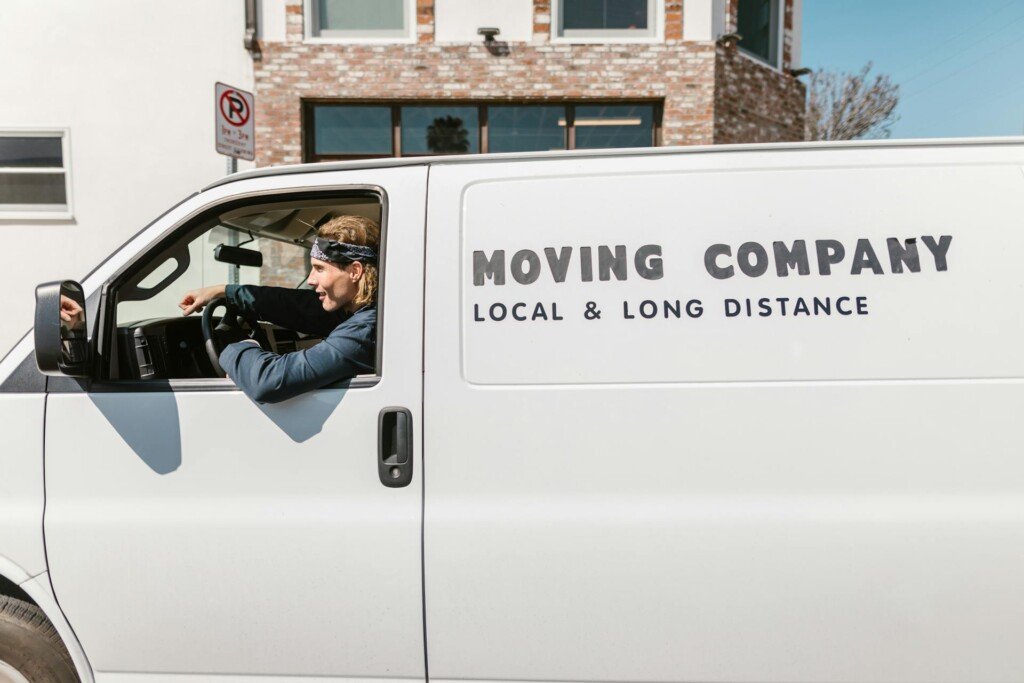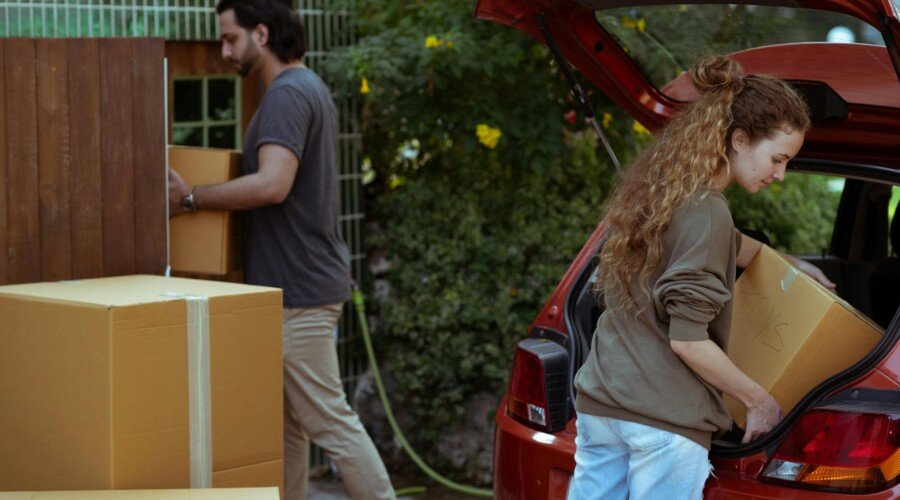Long Distance Moving Guide: Furniture Prep, Costs, Best Movers, and Stress-Free Tips
Moving changes everything about how you plan, pack and budget, especially if it’s a long-distance move or an international move. When you move locally, you can improvise a little easier since you have the familiarity. Long distance, on the other hand is a whole new dimension you’ll have to get used to. The paperwork, timing, quick decisions you’ll be making during the process and more.
This guide aims to address and tackle those real questions you normally don’t find online like for instance how to prepare your furniture for long-distance moving or how much is the expected cost from point a to point b, what are the ways I can save during this move and many more. If you are experienced already, then it’ll be easier, but for first timers, you’ll be in for a lot of new experiences.
How long distance moving works: the flow
When you move to a new place that is at least a few hundred miles away, there are federal rules that you need to comply with where movers register with the USDOT. It’s pretty basic: you get your quote, perform a survey, decide on a binding or non-binding estimate, finalize your schedule to pack, load, transport, deliver and ensure you have insurance in case of any claims that are needed. By then, you’ll need to prepare for the travel time between the pickup and delivery which may normally take a week or two depending on the distance, if it’s regional then it should be completed within a couple days.
People search for managed moves versus lump-sum options. Managed moves reduce admin. Lump sums give choice and flexibility. Always consider the time you can allot coordinating, so you’ll need to choose whether its controls or convenience.
How much does (장거리 이사) long-distance moving cost?

This is usually the first question — and the answer depends on distance, weight, and service level. Here are practical ranges to plan around:
- A typical Studio or small one-bedroom is $1,200–$3,000
- A typical Two- to three-bedroom home can reach $3,500–$7,500
- Typical Large households with lots of heavy furniture can reach $8,000–$15,000+
What drives price: distance, total weight, time of year, access at pickup and delivery, and whether you pick full packing services. If you want a number that won’t jump, ask for a binding estimate. A non-binding quote can work if you want flexibility but expect the final bill to move if the weight does.
How to Plan a Long-distance Move
Cheapest routes that still make sense when moving. If budget matters more than convenience, consider these options:
- Rent a truck and drive it yourself. This cuts sticker price, but factor fuel, lodging, tolls, and the work of loading and unloading.
- Use a container service like PODS or U-Pack. They drop a container, you load when you can, and they haul it.
- Book space in a freight trailer — you pay for trailer feet and handle the loading.
- Hybrid approach: hire local movers to load/unload your rental or container, then they transport the container for you.
- Remember to ship only the boxes you need and replace big furniture locally if it will help you save more.
Consider the timing also since off-peak moves which are normally late fall to winter, mid-month or mid-week usually cost less than summer weekend moves.
Preparing furniture for the trip
Furniture, especially bulky ones tend to take the heaviest abuse when in transit. You can prepare though to ensure it gets the proper protection by:
- Declutter first. Don’t pay to move cheap junk.
- Measure doorways, stairs, elevators, and truck space at both locations. Make sure big pieces fit.
- Disassemble what you can. Put screws and small parts in labeled bags taped to the item.
- Wrap hard surfaces with moving blankets and secure them with stretch wrap. Add cardboard corner protectors.
- Use mattress bags and TV boxes to block moisture and shock.
- Photograph pieces before loading to document condition.
If you are transporting items like antiques, large mirrors, or an old bulky piano, it is ideal to get specialty movers who offer crating and climate-controlled transport.
Packing smart for a long haul
How you pack influences whether boxes survive. Always remember to keep the weight manageable and place heavy items at the bottom to avoid troublesome claims which sometimes can have you at fault if you did not pack correctly. Reinforce bottoms with tape and label boxes with room and basic contents. Create a first-night essentials bag with meds, chargers, a couple of changes of clothes, basic toiletries, and important documents — keep that bag with you.
Essential Do’s and Don’ts for Packing
Do’s
- Use sturdy boxes and you can apply double-walled cartons for fragile or heavy items.
- Label clearly — include room, contents, and priority (e.g., “Open First”).
- Reinforce box bottoms with a packing tape to avoid collapse.
- Wrap fragile items in bubble wrap or paper, and fill empty spaces with cushioning.
- Keep essentials with you — meds, documents, chargers, clothing, and valuables should travel in your personal bag.
- Photograph high-value items before sealing boxes to support insurance claims.
Don’ts
- Don’t overload the boxes — keep the weight manageable which ideally under 50 lbs.
- Don’t mix hazardous materials like paint, propane, or cleaning chemicals with household items.
- Don’t pack perishables unless you are driving the same day.
- Don’t forget screws and parts because you’ll lose them. Keep them on bags and tape them to the item.
- Don’t skip padding on electronics, mirrors, and glassware.
- Don’t wait until the last minute — rushed packing leads to damage and stress.
Moving plants across long distances
Plants are living and many states restrict certain species. Practical options:
- Drive plants in your car if possible. They need light and steady temperatures.
- Do not fill the plants with water a day or two before traveling during transit.
- Ensure you secure the pots in ventilated boxes to avoid tipping.
- Take cuttings or seeds and regrow at the new spot if the transport poses problems.
- Hire professional plant shippers for valuable collections who know the rules.
Never load plants into an enclosed moving truck for long hauls; heat and darkness can kill them.
How to choose a mover

No single company fits every situation. Focus on clarity and credentials:
- Verify the USDOT number for interstate moves.
- Ask what insurance options they offer and whether they subcontract.
- Read recent reviews on multiple sites and ask for references.
- Make sure they spell out delivery windows, long-carry fees, and other surcharges.
- Confirm experience with specialty items you have, like pianos or art.
Get at least three written estimates and make sure the service lists match. Often the mid-range quote with clear terms beats a low-ball offer that hides fees.
Insurance, valuation, and claims
Movers must offer a basic released-value option, but that often amounts to cents per pound per item. For real protection, buy full-value protection from the mover or a third-party policy. If you find some of the items are damaged, immediately note it on the delivery inventory before you sign off, take a pic of the damage then proceed with the claim asap. Receipts are important for cases of repairs or replacements.
Vehicle and pet transport
Options for cars: drive it yourself or ship it. Auto transport runs roughly $700–$1,500 cross-country depending on open vs enclosed transport and timing. Enclosed shipping protects better; open transport saves money.
For pets, crate rules and airline restrictions vary. Plan stops for road trips and confirm vet paperwork for flight or ground shippers. If pets or plants are precious, carry them in your vehicle rather than trap them in a moving van.
Storage when dates don’t match
If your new place isn’t ready, you’ll use storage. You have a couple options to go with which include storage lots, warehouse storage, or self-storage units which allow you to access yourself. It is ideal to compare and review your insurance coverage, what are the access hours and fees expected before you decide who to go with.
Avoiding hidden fees and scams
Be cautious for red flags which can most of the time be low bids, cash-only demands, contracts that don’t make sense or no USDOT registration which is the most obvious one of all. Movers should list every possible additional charge for long carry, shuttle service, fuel costs, storage and more. Everything should be in writing and avoid a blank form.
Timeline and checklist that actually works
- 12 weeks out: research movers, request quotes, and start decluttering.
- 8 weeks out: choose a mover, book the slot, and start packing non-essentials.
- 6 weeks out: arrange pet and vehicle transport and request medical/school records transfers.
- 4 weeks out: confirm utility shutoffs and new hookups; continue packing.
- 2 weeks out: finish packing, label boxes, and prepare the essentials bag.
- Move week: supervise loading, keep important documents on you, and photograph the loaded truck.
- Delivery week: inspect items, sign the inventory, and file claims if needed.
Packing materials that you need to purchase for the move
Always remember that quality saves you valuable time and money. This is why you need to picture boxes, bubble wrap, moving blankets, mattress bags, and heavy-duty tape prevent replacement costs later. For fragile gear, get double-walled boxes.
Special items: pianos, pool tables, and fine art
These items need pros. Pianos and pool tables require specific tools and experience. Artwork often needs crating and climate control. Don’t let a general mover guess. Get specialized quotes and accept the added cost for safety.
Electronics and home office checklist
- Photograph cable setups before disconnecting.
- Label cords and ports.
- Pack monitors and equipment in original boxes if possible.
- Carry external drives and cameras with you when flying.
- Back up critical files to the cloud before transit.
Expect last-minute changes so you can quickly adapt
Your mover can sometimes inevitably experience delays caused by weather, it can sometimes be mechanical issues or even logistics if the driver is new to the location so when this happens, do allow yourself to accommodate some flexibility for the trip and prepare for refundable travel plans, a contingency fund for storage or extra nights in a hotel, and a reliable contact for status updates.
Unpacking strategy for sanity
It is best to start with the bedroom and bathroom. Make a bed and set up basic toiletries so you have comfort on night one. Then tackle kitchen basics and the living area. Make sure to organize big furniture first so boxes have places to go. Remember that you don’t need to complete the unpacking in a single night or weekend, be realistic and give yourself time.
Tax reimbursement and employer benefits
If you’re moving due to your job requirements, some companies can reimburse fees or offer a relocation allowance. Keep your receipts stashed. Check your HR portal or consult a tax advisor about whether reimbursements are taxable in your situation.
Local rules and parking permits
Some cities require permits for a moving truck to block a lane or use restricted parking. Confirm with your building manager and local authorities whether a permit is needed. Having it covered saves fines and delays on moving day.
Sustainability tips for moving
You can donate items to cut waste. Additionally, rent out reusable wardrobe boxes, recycle packing materials, and pick a mover with eco-friendly options. If you drive a single rental truck with efficient routing also lowers the carbon footprint compared to multiple trips.
Helpful Tips for Preparing for a Long-Distance Move
- Start early — plan 8–12 weeks ahead so you have enough time to compare movers and declutter.
- Declutter ruthlessly — every item you don’t take saves money and effort.
- Pack by category, not location — books together, clothes together, electronics together. It makes unpacking faster.
- Create an essentials box — toilet paper, towels, snacks, light tools, and a kettle/coffee maker can make day one smoother.
Use color-coded labels — assign each room a color for faster sorting on arrival. - Confirm logistics — check stairs, elevators, parking permits, and truck clearance at both ends.
- Plan for pets and plants — don’t assume movers will handle them; make your own arrangements.
- Budget a buffer — set aside 10–15% extra for unexpected costs like storage, tolls, or overnight stays.
The emotional work: leaving and landing
If you move, it uproots routines and social circles which is why it is important to create small rituals to say goodbye. This could be eating a favorite meal with friends, a casual gathering, or a photo book. At the new place, build simple anchors — a grocery run, a gym visit, and a favorite coffee spot — to help the new city feel familiar fast.
When professional packing makes sense
If you own lots of fragile items, antiques, or you have a tight timeline, professional packing saves time and often reduces breakage. It costs more, but if the alternative is lost hours and stress, it’s worth weighing.
Common mistakes people regret
- Booking movers too late in peak season.
- Shipping items that aren’t worth moving.
- Opting for minimum liability and regretting it later.
- Failing to read the delivery window and extra-fee clauses.
- Forgetting to forward mail or cancel subscriptions.
Quick, natural answers people type into search
People ask how to prepare furniture for long-distance moving? — disassemble large items, wrap with blankets, and tape hardware bags to the piece. They want to know how much (장거리 이사) long-distance moving costs — plan with the ranges above. They ask how to transport plants when moving long distance — drive small plants yourself or take cuttings. They wonder what the best moving company for long distance is — compare Allied, United, North American, U-Pack, PODS, and trusted local firms. They ask what the cheapest option for moving long distance is — often a DIY truck or container service saves the most.
Final checklist you can use now
- Secure 3–5 written estimates and compare services, not just price.
- Confirm USDOT registration and insurance options.
- Declutter and sell or donate what you don’t need to move.
- Book pet and vehicle transport well in advance.
- Pack an essentials bag and keep it with you.
- Photograph high-value possessions before loading.
- Label boxes by room and priority.
- Confirm delivery window and any local permit requirements.
- Inspect items on delivery and document any damage.
If you want tools that cut the research and compare providers, visit Outplore for relocation resources, vetted service providers, and local tips that make a fresh start feel less chaotic and more possible.
1. How far in advance should I book a long-distance mover?
Ideally, 8–12 weeks in advance. Booking early secures your preferred date and helps avoid peak-season surcharges.
2. What’s the cheapest way to move long-distance?
DIY truck rentals or container services (like PODS or U-Pack) usually cost less than full-service movers, but you’ll trade money for labor and time.
3. How do I prepare furniture for a long-distance move?
Disassemble large items, wrap surfaces in moving blankets, tape screws and bolts in labeled bags, and use protective covers for mattresses and electronics.
4. Can I move plants across state lines?
Yes, but check agricultural restrictions in your destination state. For safety, transport plants in your own vehicle or bring cuttings/seeds instead of whole plants.
5. What should I look for in a moving contract?
Check for USDOT registration, detailed delivery windows, insurance options, and a breakdown of potential fees (fuel, long carry, storage). Avoid blank or vague contracts.
6. How can Outplore help with long-distance moving?
Outplore connects you with vetted relocation providers, moving resources, and local tips. Instead of spending hours comparing movers and storage options, you’ll find curated recommendations in one place — saving time, money, and stress.



